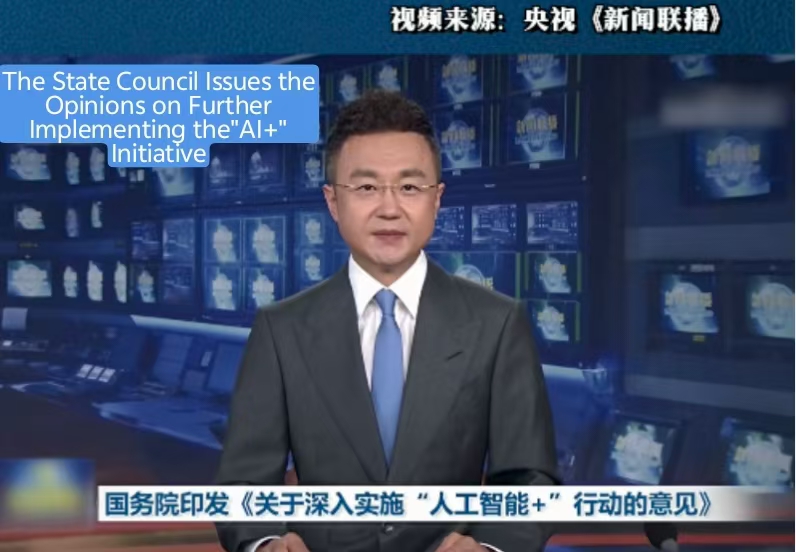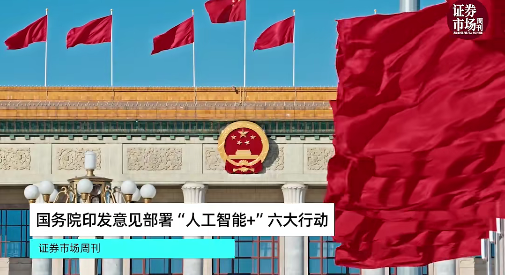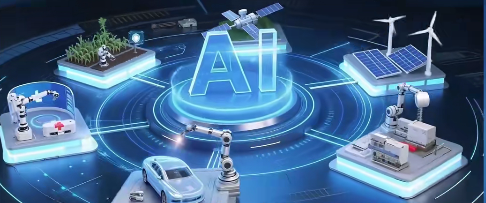

The State Council’s Opinions on Further Implementing the "AI +" Initiative is leading the connector industry into a new phase of innovative development.
With the intensive release of a series of national-level policies, China’s connector industry is embracing unprecedented development opportunities. As indispensable basic components in electronic equipment, products such as connectors and wire harnesses, though small in size, play a crucial role as the "neural networks" and "blood vessels" in the modern industrial system.
Issued by the State Council in August 2025, the Opinions on Further Implementing the "AI +" Initiative clearly proposes to systematically drive the connector industry toward high-end, intelligent, and green transformation through five key pathways: technological research, domestic substitution, industrial chain collaboration, standardization, and scenario opening-up . This policy orientation is highly aligned with the technological evolution direction of the connector industry.
01 Policy Guidance: From Industrial Planning to Standard Development
Looking back at China’s policy support system for the connector industry, since the "11th Five-Year Plan" period, the state has clearly emphasized actively promoting the development of general electronic components such as connectors, fostering industrial clusters, and driving the formation of an optoelectronic industrial chain. During the "12th Five-Year Plan" to "13th Five-Year Plan" periods, the policy focus shifted to promoting industrial restructuring, enhancing R&D capabilities, strengthening the independent development capacity of basic electronics, and guiding the industry to extend toward the high end of the industrial chain.
In recent years, policy support has been further strengthened. In October 2016, the Ministry of Industry and Information Technology (MIIT) released the Industrial Technology Innovation Capacity Development Plan (2016-2020), encouraging the development of key electronic component technologies including connectors. In January 2021, the Action Plan for the Development of Basic Electronic Components Industry (2021-2023) proposed breaking through key technologies for electronic components such as high-speed connectors. In July 2023, MIIT and other multiple departments jointly issued the Implementation Opinions on Improving Manufacturing Reliability, emphasizing the need to focus on enhancing the reliability of high-speed connectors.
Notable progress has also been made in standardization. Taking Tianhai Group as an example, by 2025, the company has led or participated in formulating 10 key standards for the automotive industry. Among them, 6 national standards officially released on August 1 cover key fields such as high-voltage connections for electric vehicles and electromagnetic compatibility of electrical and electronic components, and will take effect on February 1, 2026 . Up to now, the group has led or participated in compiling more than 40 standards of various types, covering core fields such as automotive connection systems and intelligent connected technologies.

02 Opportunities and Challenges Brought by the "AI +" Initiative
The Opinions on Further Implementing the "AI +" Initiative sets clear timeline goals: by 2027, take the lead in realizing extensive and in-depth integration of AI with 6 key fields, with the penetration rate of new-generation intelligent terminals and agents exceeding 70%; by 2030, realize full empowerment of high-quality development by AI in China, with the penetration rate of new-generation intelligent terminals and agents exceeding 90%; by 2035, comprehensively enter a new stage of intelligent economy and intelligent society development in China.
This grand blueprint creates broad market space for the connector industry. With the in-depth advancement of the "AI +" Initiative, multiple links in the upstream and downstream of the industrial chain will benefit . In particular, sectors closely related to AI applications—such as computing power, data, and algorithms, as well as related industries including AI information services and intelligent robots—will generate huge demand for connectors.
At the same time, the connector industry also faces security challenges. According to IBM’s 2025 Cost of a Data Breach Report, many enterprises skipped AI security governance links in pursuit of "rapid deployment," making these unregulated systems more vulnerable to attacks. Almost all organizations that experienced AI-related security incidents in the past year failed to implement appropriate AI access controls. This reminds connector enterprises to attach great importance to product security while pursuing technological innovation.
03 Industry Response: Technological Innovation and Standard Upgrading
Faced with policy guidance and market opportunities, connector enterprises are taking active actions.
In terms of high-end transformation, enterprises are increasing R&D investment to break through key technologies. For instance, targeting the new energy vehicle market, the national standard GB/T 37133-2025 High-Voltage Connection Systems for Electric Vehicles has been updated and adjusted in multiple aspects compared with the 2018 version. It strengthens requirements for electrical safety, mechanical strength, and environmental adaptability, and introduces more advanced testing methods to ensure products meet higher safety standards.
In terms of intelligent upgrading, connector enterprises are actively integrating AI technology into the entire process of product design, manufacturing, and testing. The Opinions on Further Implementing the "AI +" Initiative proposes promoting the intelligent development of all industrial elements, driving the intelligent linkage of all industrial factors, and accelerating the application of AI in the entire process of design, pilot testing, production, service, and operation. This provides clear guidance for the intelligent transformation of connector enterprises.
In terms of green development, the connector industry is actively responding to national environmental policies. GB/T 37133-2025 adds requirements for the proportion of recyclable materials and clauses restricting the use of hazardous substances, guiding the industry toward environmental protection.

04 Future Outlook: Industry Development Paths Under Policy Guidance
Looking ahead, under policy guidance, the connector industry will present three major development paths:
First, the technological research path. Policies clearly require strengthening basic theoretical research on AI, supporting multi-path technological exploration and model infrastructure innovation. The connector industry needs to increase R&D investment in these fields to break through key technological bottlenecks.
Second, the industrial chain collaboration path. The Implementation Opinions on Promoting the Innovative Development of Future Industries systematically drives the development of the connector industry through industrial chain collaboration. This requires connector enterprises to strengthen cooperation with upstream and downstream enterprises and establish a collaborative innovation mechanism.
Third, the standardization path. Policies emphasize accelerating the development of AI standards in key fields and promoting cross-industry, cross-domain, and international standard linkage . The connector industry needs to actively participate in standard formulation to enhance its voice in the industry.
Conclusion
With the strong support of national policies, the connector industry is at a critical juncture of transformation and upgrading. As national-level policies continue to guide and support the industry, connector enterprises should actively seize the opportunities brought by the "AI +" Initiative, strengthen technological innovation, improve product quality, and optimize the standard system. Only in this way can they gain an advantage in the competition of the new era and provide solid basic support for the development of China’s intelligent economy and intelligent society.
| Product Category | Part Number | Altemative | Product Image |
| Through Hole Reflow Series | |||
| Wire-to-Board Connector | |||
| JST SM(xx)B-ZESS-TB | |||
| Product Category | Part Number | Altemative | Product Image |
| Wire-to-Wire Connector | C6201 | ||
| C2507 | |||
| C2001 | |||
| Board-to-Board Connector | |||
| B1501 | |||
| FPC Series | F1001 | ||
| F0507AWR | |||
| F0301AWR |